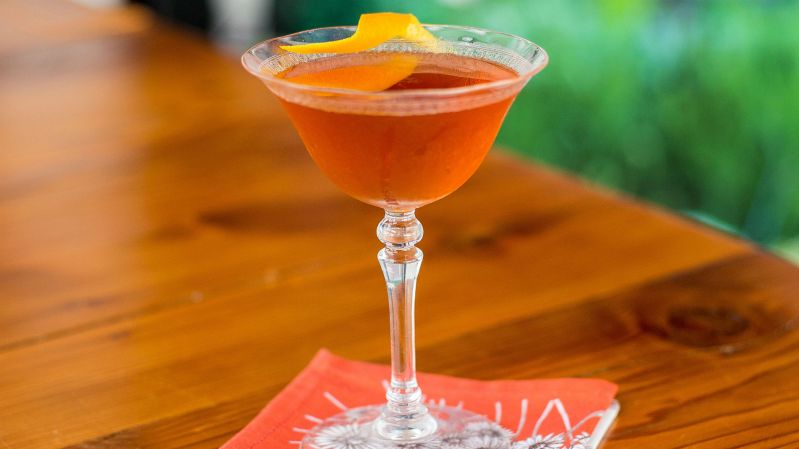When it comes to cocktails, it isn’t only the base spirit that matters. The quality of ingredients that you’re using with said base spirit are just as important, because these additional elements are going to help the liquor shine. This is where Curaçao comes in.
Curaçao (cure-a-sow) is a liqueur flavored with the dried peel of laraha, a bitter, orange-like fruit that is grown on the island of — you guessed it — Curaçao. If you were drinking during the ’90s or survived college parties with jungle juice, you’ve probably seen Curaçao before — in its neon blue form.
However, the liqueur has a much more storied history dating back to the 1600s. Destillaré orange Curaçao (which is Latin for “to drop” and “distillation”) thankfully follows the trail of the historical variations and not in the foot steps of its neon brethren.

Made by Copper & Kings American Brandy Co. in Louisville, Kentucky, this Curaçao is produced in a way close to the original liqueurs of the same name. Copper & Kings uses a vapor distillation process with orange peels and lavender petals; apple brandy barrel-aging; and orange clover honey as a back sweetener instead of regular sugar. The resulting liquid is orange in color (not blue), pictured above in a classic Sidecar cocktail.
Appearance: Destillairé Orange Curaçao is a pale straw color.
Nose: Immediately, the smell of ripe orange asserts itself. This is followed by honeyed orange zest and candied apple. On the end, there are notes of sweet tea and clover honey.
Palate: This is viscous, liquid orange through and through. Under the orange flavors, the spirit base — apple brandy — presents itself in the form of slow-cooked apples. There is only a quiver of heat, despite the 45 percentABV.
Finish: For a liqueur, this has a nice, medium-length finish that leaves fresh squeezed orange on the palate.
Final Thoughts: One of the things I loved as a kid was orange Triaminic cough syrup. It went down so smoothly compared to other flavors of medicine. At first, that is what this reminded me of, but as I sat with it, the Curaçao really opened up. The pure orange flavor you get here goes really well with the apple brandy base. In short, while I wouldn’t necessarily drink this on its own, it makes a great addition to multitudes of cocktails. If you don’t believe me, buy a bottle of the bottom shelf Curaçao out there and do a side-by-side — the contrast is stark.
Destillaré Orange Curaçao is 45 percent ABV and retails for around $35.




